This article may contain affiliate links. If you click on these links and make a purchase, we may receive a small commission at no extra cost to you. This helps support our website and allows us to continue to produce content like this. Thank you for your support!
Welcome to 2025, where innovative and inspiring trends promise to transform any living space into a personalized and stylish sanctuary. Whether you’re aiming for a complete overhaul or seeking subtle enhancements, these trends offer dynamic solutions for every home. Let’s explore these transformative concepts to inspire your living space enhancements.
1. Biophilic Design
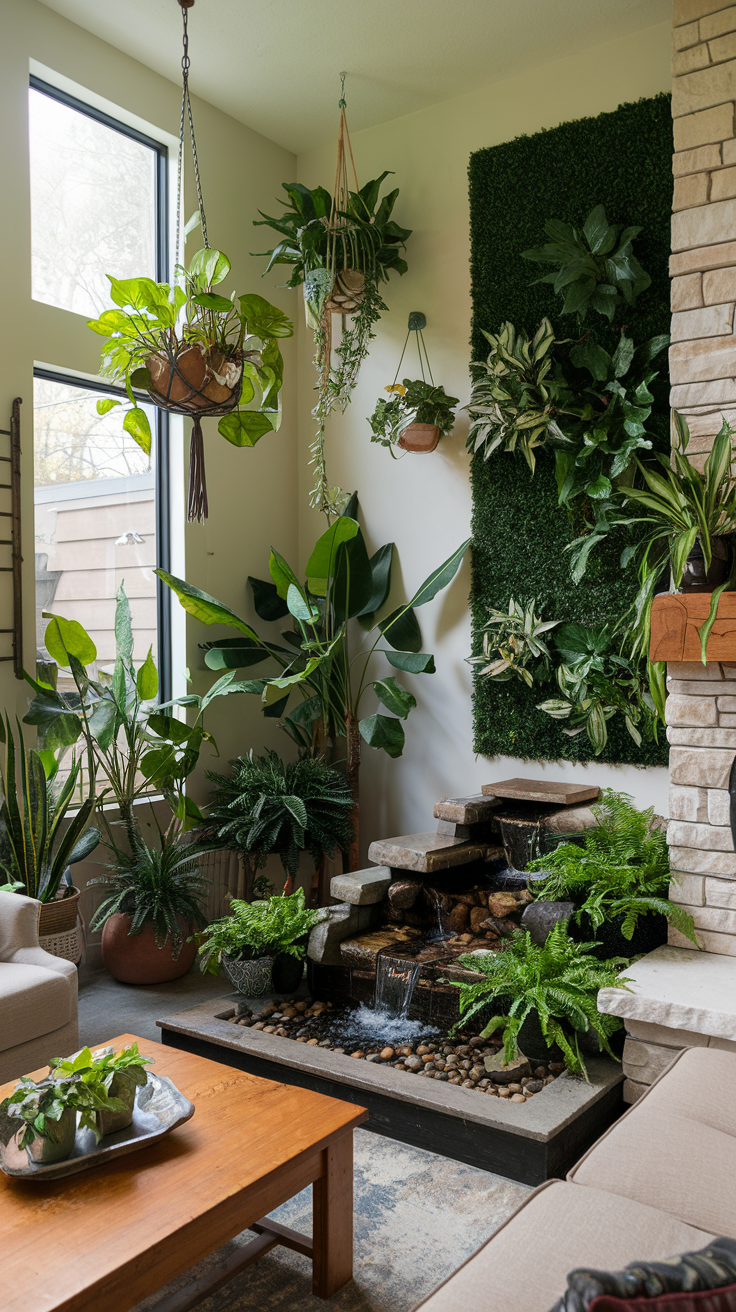
Biophilic design integrates natural elements directly into your living spaces, promoting health, well-being, and a deeper connection with nature. This approach aims to create harmonious environments that enhance occupant connectivity to the natural world through the use of direct nature, indirect nature, and space and place conditions.
How to Implement:
- Integrate a mix of indoor plants, green walls, and water features to bring a sense of the outdoors inside.
- Use materials like bamboo, wood, and stone to add natural textures and colors.
- Design spaces to maximize natural light through large windows or skylights.
Picture This: Imagine a living room with a ceiling of skylights that bathe the space in natural light, showcasing a lush indoor vertical garden that covers an entire wall. Wooden furniture and stone decorations echo the natural theme, creating a peaceful, earthy retreat.
2. Smart Home Tech
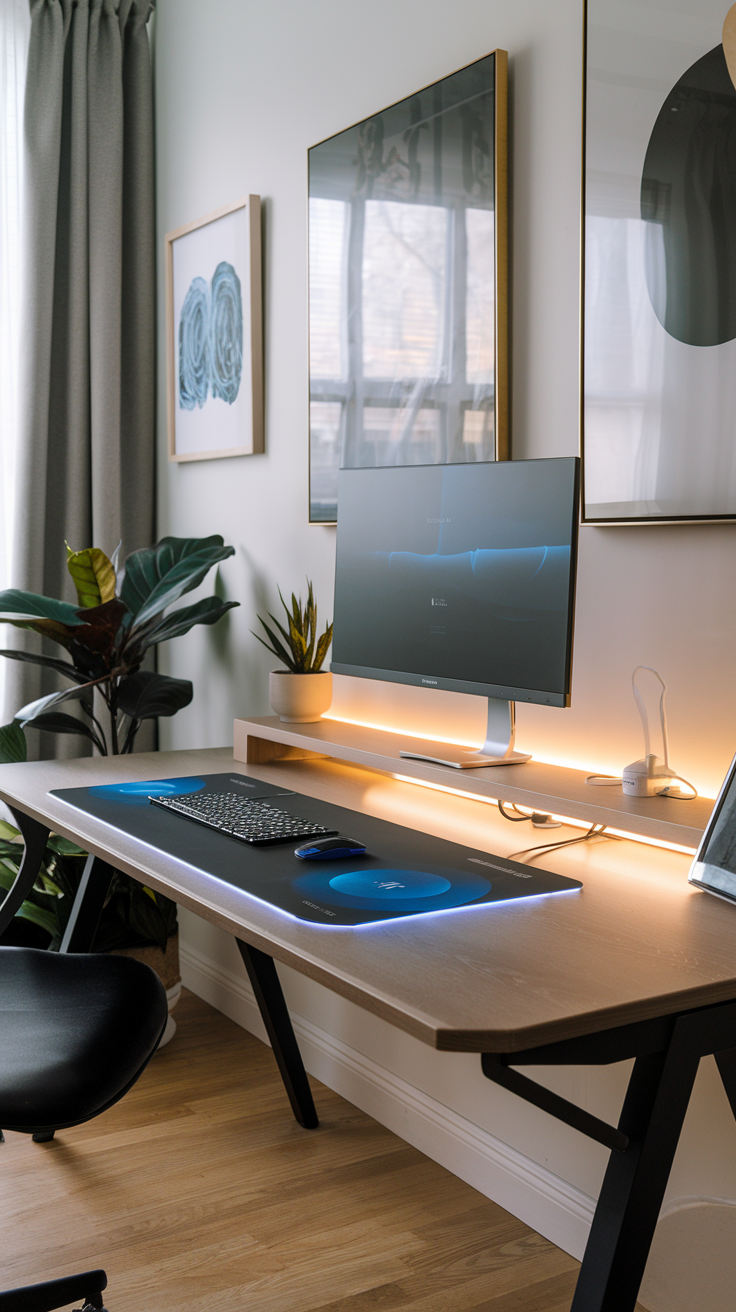
Smart home technology enhances convenience and efficiency, integrating cutting-edge technology into everyday home functions. This includes automated systems that adjust to the homeowners’ lifestyles, providing enhanced security, efficiency, and energy management.
How to Implement:
- Employ smart thermostats and lighting systems that adjust automatically to save energy and improve comfort.
- Install smart security systems for enhanced safety that you can monitor from anywhere.
- Opt for devices that integrate with existing digital assistants for voice control.
Picture This: Envision your living room adjusting its ambiance based on the time of day; blinds automatically lower and lights dim to a soft glow as evening approaches, all controlled through a simple voice command or a tap on your smartphone.
3. Bold Wallpaper

Bold wallpaper transforms spaces with its dynamic visual impact, featuring large-scale patterns and vibrant colors. It serves as a powerful design statement, ideal for creating focal points in any room and injecting personality into modern and traditional decors alike.
How to Implement:
- Select a dramatic wallpaper to create an accent wall in living rooms or bedrooms.
- Balance the boldness of the wallpaper with subdued furnishings and decor elements.
- Consider removable wallpaper for an easy, commitment-free update.
Picture This: Visualize a stunning entryway where one wall boasts an oversized floral pattern in vibrant blues and greens, setting an inviting tone for the entire home.
4. Multifunctional Spaces

Multifunctional spaces reflect the modern need for adaptability in home design, catering to the diverse functionality of compact urban living. These areas are engineered to serve multiple purposes, such as living spaces that double as home offices or guest rooms. Through innovative furniture solutions and smart spatial layouts, these spaces maximize utility without compromising on style or comfort.
How to Implement:
- Use furniture that serves multiple purposes, such as beds with storage or expandable dining tables.
- Incorporate foldable or modular units that can be reconfigured as needed.
- Design zones within a room that can easily transition from one use to another.
Picture This: Imagine a living room that seamlessly transforms into a home cinema with retractable screens, hidden speakers, and furniture that adjusts to provide optimal viewing comfort.
5. Sustainable Materials
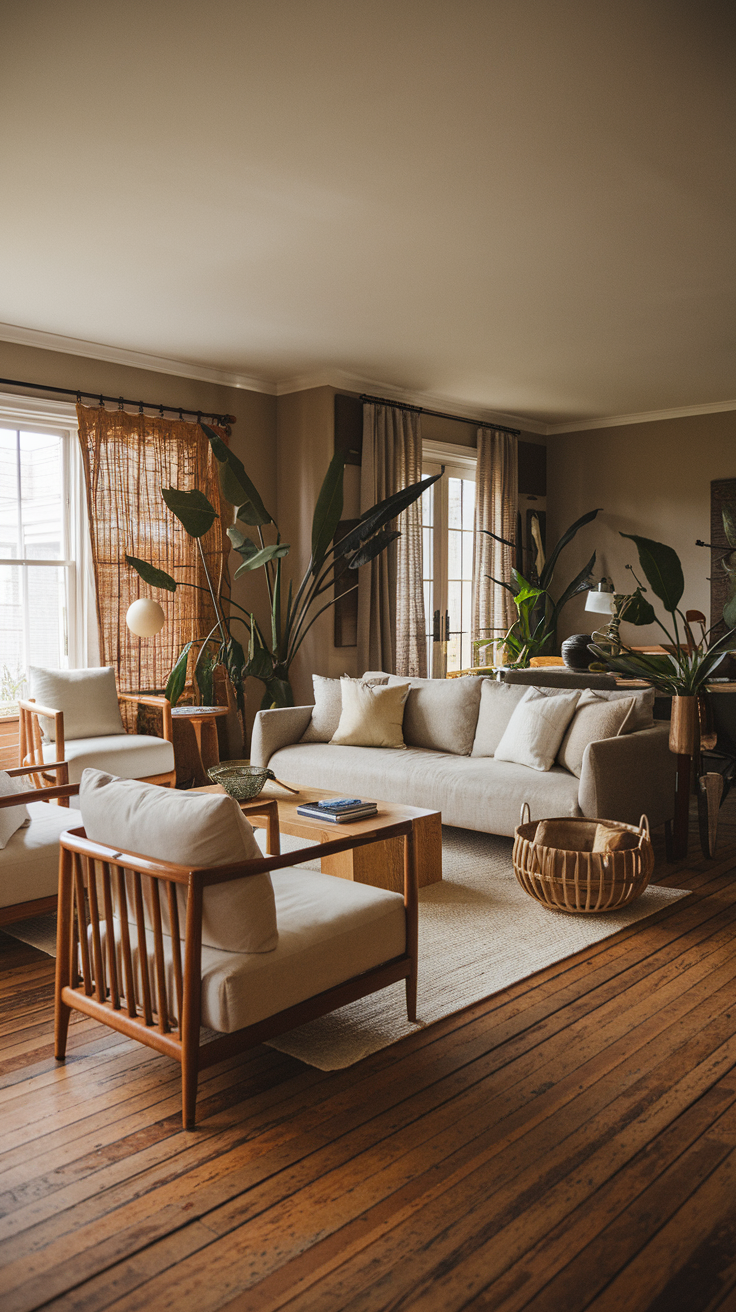
Sustainable materials emphasize environmental responsibility, utilizing resources that are renewable or have minimal impact on the earth. Employing these materials demonstrates a commitment to sustainability and can significantly enhance the ecological footprint of any home.
How to Implement:
- Select furnishings made from recycled or responsibly sourced materials.
- Choose home improvements like solar panels or energy-efficient windows to reduce energy consumption.
- Decorate with items made from natural fibers and sustainable practices.
Picture This: Your spacious living room is fitted with reclaimed hardwood floors that boast a rich history, complemented by furniture upholstered in organic linen in neutral shades, surrounded by energy-efficient LED lighting.
6. Artisan and Handcrafted Elements
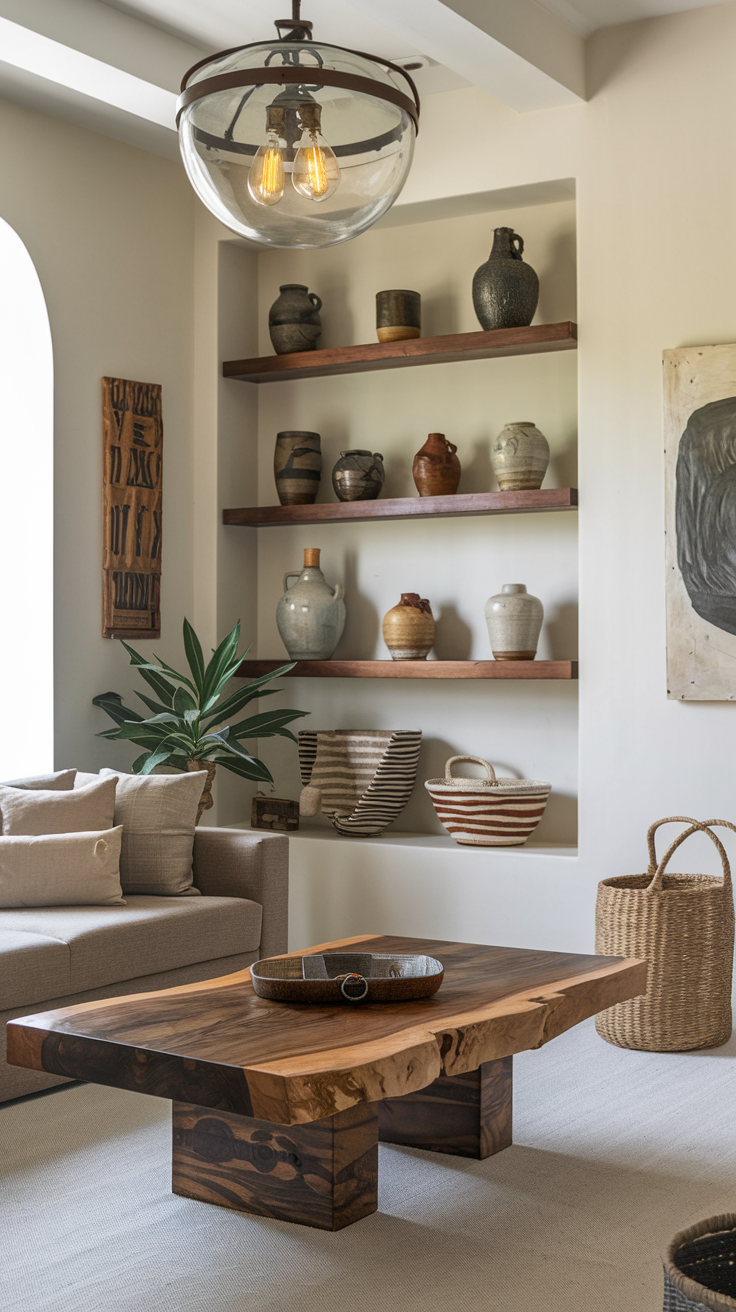
Artisan and handcrafted elements celebrate the beauty of craftsmanship, bringing unique textures and personal stories into the home. These items, ranging from bespoke furniture pieces to custom light fixtures, are often sourced from local artisans, supporting small businesses while adding distinctiveness and charm to interiors.
How to Implement:
- Source furniture and decor from local artisans or bespoke craftsmen.
- Display handmade items like pottery, textiles, and artwork to add a personal touch to your spaces.
- Choose artisan pieces that tell a story or reflect cultural heritage.
Picture This: A cozy corner filled with handcrafted wooden shelves displaying a collection of artisan ceramics and hand-woven baskets, each piece adding warmth and character to the room.
7. Vintage and Antique

Vintage and antique decor introduces a layer of depth and character by incorporating elements from the past into contemporary settings. This trend celebrates the beauty and craftsmanship of older pieces, blending them with modern elements to create a rich, layered aesthetic that tells a story of timelessness and style.
How to Implement:
- Integrate vintage furniture and accessories into modern decor settings.
- Restore antique pieces to maintain their historical value while adapting them for modern use.
- Use vintage items as focal points or conversation starters in your decor.
Picture This: A dining room with a classic 1940s mahogany table, paired with contemporary chairs and lit by a refurbished Art Deco chandelier, creating a stylish blend of old and new.
8. Layered Textures
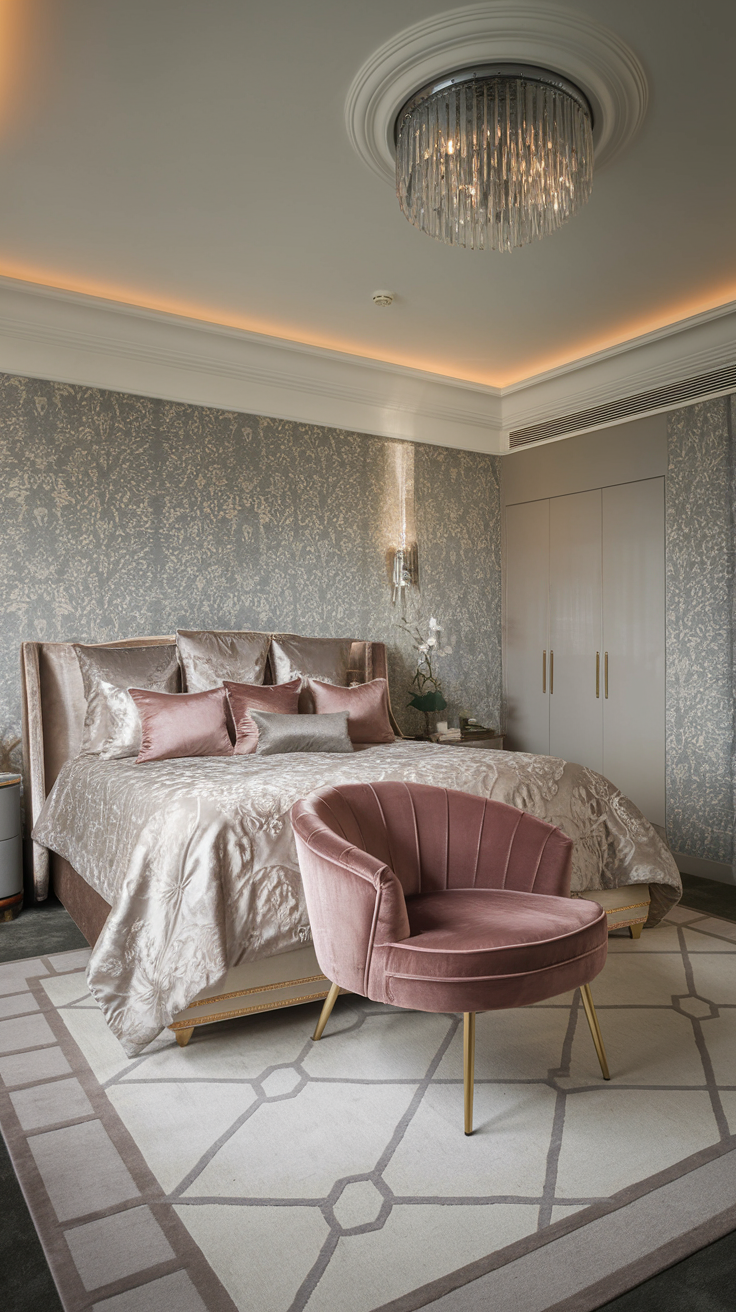
Layered textures introduce depth and complexity to interiors, creating a rich tactile environment. This trend involves combining various materials such as soft textiles, rugged wood, and sleek metal, enhancing the sensory experience of the space. Textural layering is key to adding warmth and interest, making rooms feel inviting and lived-in.
How to Implement:
- Combine different textiles like velvet, silk, or faux fur with rougher textures like burlap or untreated wood.
- Layer floor coverings with rugs of different sizes and textures for added comfort and visual interest.
- Use wall hangings, pillows, and throws in a variety of textures to add richness and warmth to any space.
Picture This: A luxurious bedroom adorned with silk draperies, a velvet-covered bed, and a soft, hand-tufted wool rug, creating a haven of textures that invite relaxation and comfort.
9. Global Influences
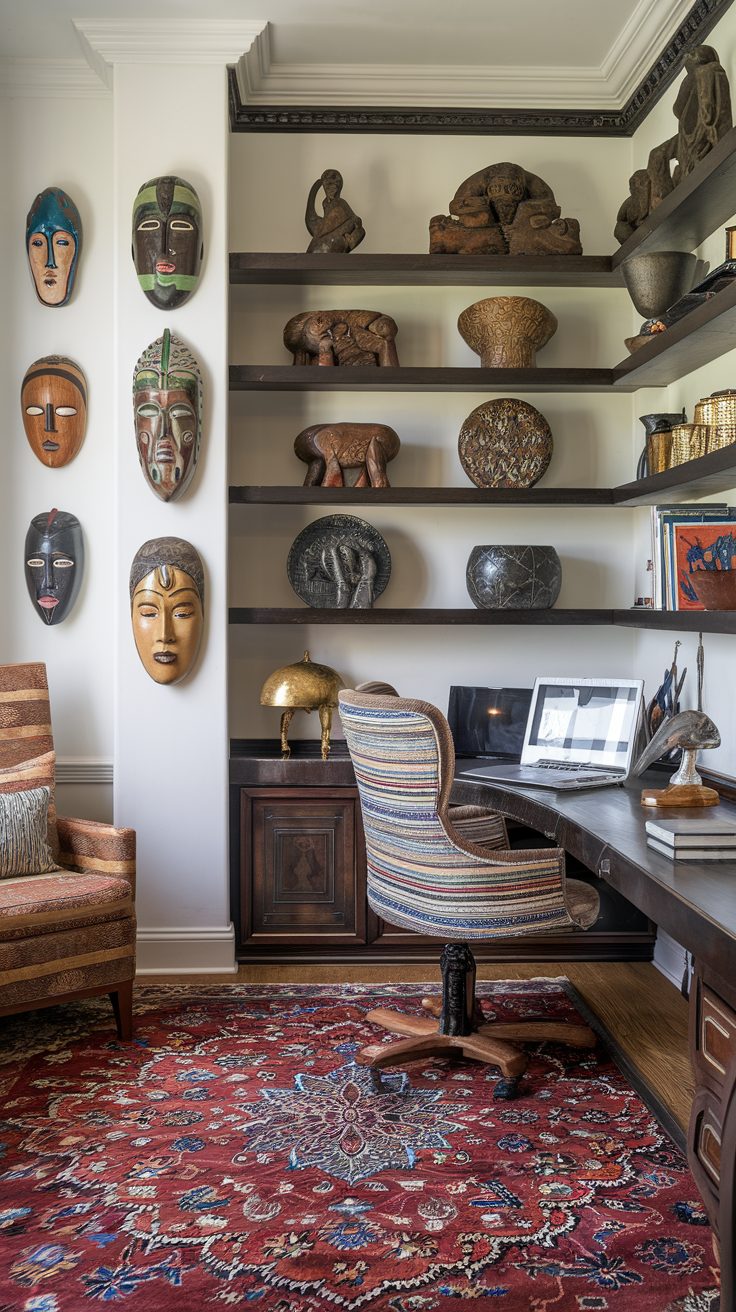
Global influences incorporate decorative elements from around the world, creating a culturally rich and diverse home environment. This trend reflects a blend of international styles and traditions, bringing global sophistication to local spaces.
How to Implement:
- Decorate with items collected from travels or inspired by different cultures, such as Moroccan rugs, Japanese screens, and Brazilian art.
- Use bold, ethnic patterns and colors in textiles and artwork.
- Create themed rooms that reflect specific cultural aesthetics.
Picture This: A study decorated with colorful African masks on the walls, a large, ornate Persian rug on the floor, and a set of Balinese wood carvings on the shelves. Each piece contributes to a rich tapestry of global culture, making the room a vibrant and inspiring place to work and relax.
10. Indoor/Outdoor Living
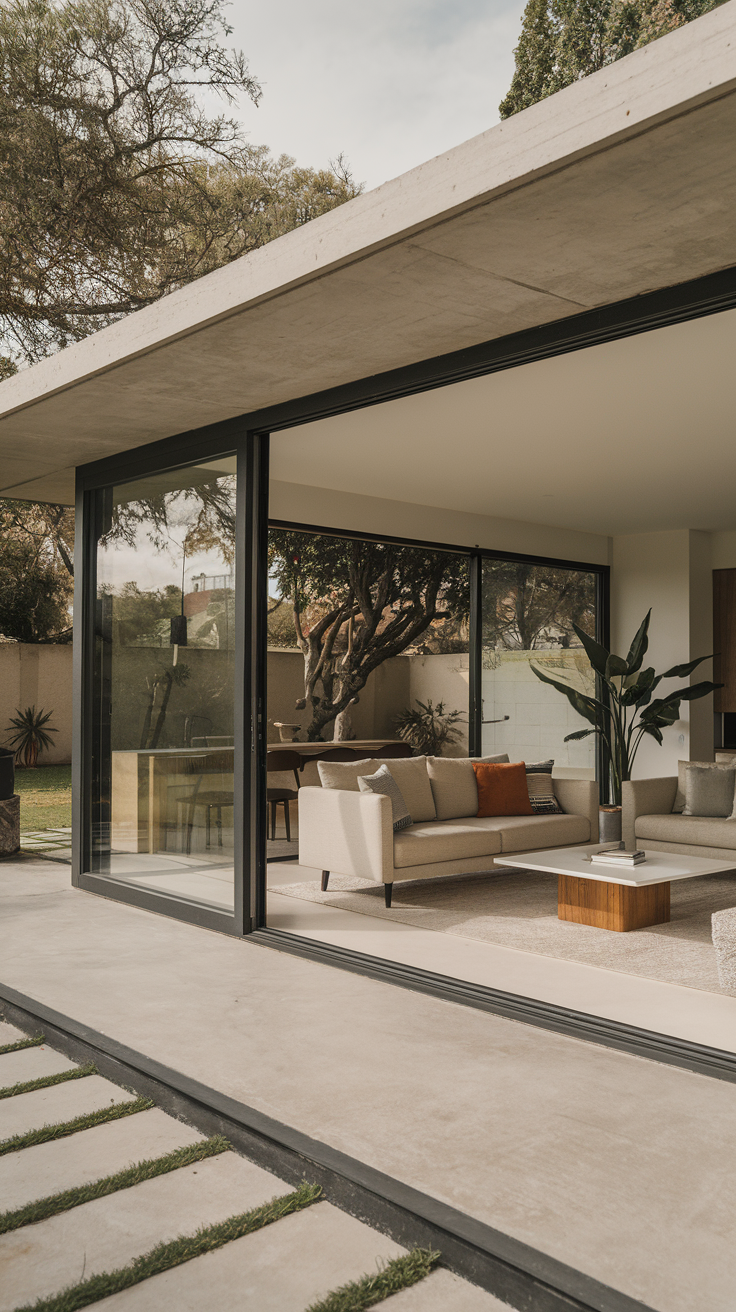
Indoor/outdoor living expands the functional space of your home by blending interior design with exterior charm. This trend focuses on creating fluid, open spaces that allow residents to move seamlessly between indoor and outdoor environments, essentially extending the livable space and integrating the home with its natural surroundings.
How to Implement:
- Use large sliding or bi-fold doors to open up interiors to outdoor spaces, enhancing the flow and making transitions seamless.
- Design outdoor areas with comfortable seating, weather-resistant materials, and ambient lighting to make them as inviting as the interiors.
- Ensure continuity in design from the indoor to the outdoor areas to enhance the sense of space and unity.
Picture This: An open-plan living area that flows into an outdoor patio, complete with matching decor and a continuous floor treatment, effectively doubling the living space and blurring the lines between inside and out.
Conclusion:
The home decor trends of 2025 offer exciting opportunities to refresh and revitalize your living spaces. Each trend provides a unique way to enhance both the functionality and aesthetic appeal of your home. From the tranquility of biophilic elements to the sophistication of smart technology and the rich diversity of global influences, there’s a trend here to satisfy every design aspiration.
Feeling inspired? Visit our blog for deeper insights, step-by-step guides, and all the tips you need to begin incorporating these exciting trends into your home. Start today and transform your space into a reflection of your unique style and the forefront of design!



